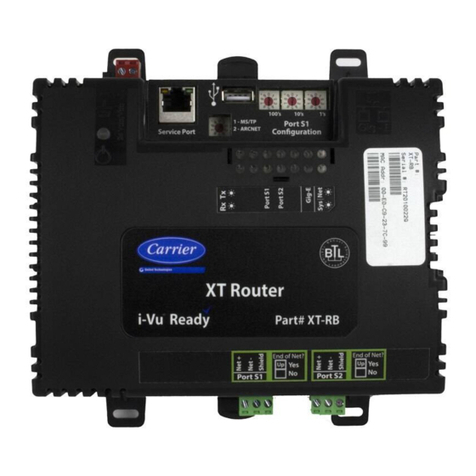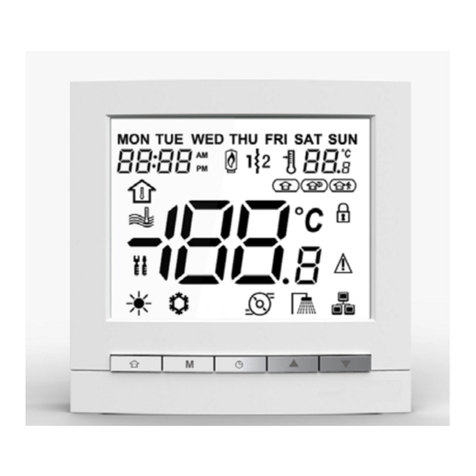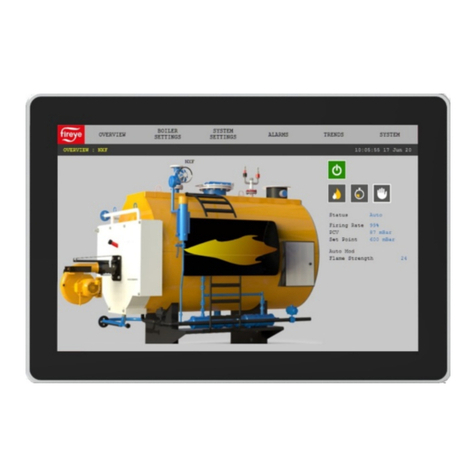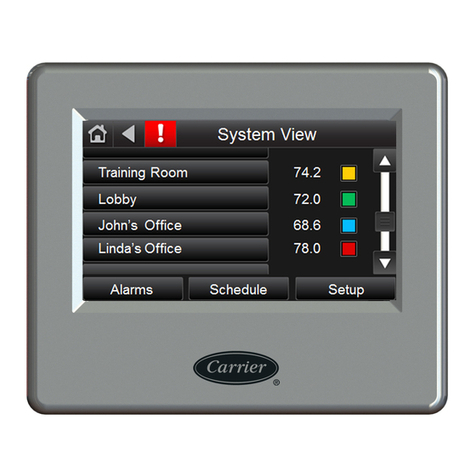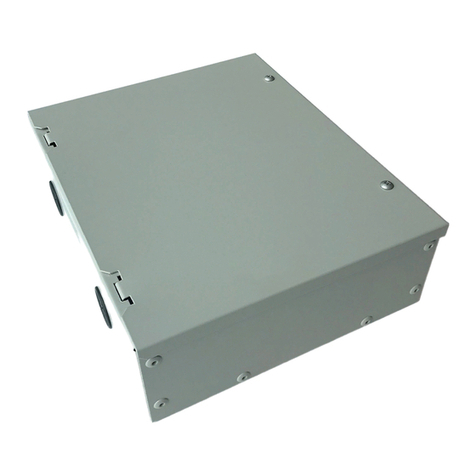
Manufacturer reserves the right to discontinue, or change at any time, specifications or designs without notice and without incurring obligations.
PC 111 Catalog No. 533-396 Printed in U.S.A. Form 33CN-1T Pg 1 1202 11-02 Replaces: New
Book 1 4
Tab 11a 13a
Controls Operation and
Troubleshooting Instructions
CONTENTS
Page
GENERAL . . . . . . . . . . . . . . . . . . . . . . . . . . . . . . . . . . . . . . . . 1
CONTROLS . . . . . . . . . . . . . . . . . . . . . . . . . . . . . . . . . . . . . . 1
INSTALLATION CONSIDERATIONS . . . . . . . . . . . . . 1-5
Default Address and Baud Rate . . . . . . . . . . . . . . . . . . 1
Input Wiring . . . . . . . . . . . . . . . . . . . . . . . . . . . . . . . . . . . . . . 3
Output Wiring . . . . . . . . . . . . . . . . . . . . . . . . . . . . . . . . . . . . 3
I/O Type Switch Settings . . . . . . . . . . . . . . . . . . . . . . . . . 5
CONFIGURATION TABLES . . . . . . . . . . . . . . . . . . . . .5-11
Alarm Service Configuration . . . . . . . . . . . . . . . . . . . . . 5
Service Configuration . . . . . . . . . . . . . . . . . . . . . . . . . . . . 5
Time Broadcast Configuration . . . . . . . . . . . . . . . . . . . 7
Holiday Configuration Screens. . . . . . . . . . . . . . . . . . . 8
Time Schedule Configuration . . . . . . . . . . . . . . . . . . . . 8
Points Display Table. . . . . . . . . . . . . . . . . . . . . . . . . . . . . . 9
Occupancy Maintenance Table . . . . . . . . . . . . . . . . . . . 9
CSM III INTERFACE REQUIREMENTS . . . . . . . . .11,12
Chiller Status . . . . . . . . . . . . . . . . . . . . . . . . . . . . . . . . . . . 11
CCN Control Variables . . . . . . . . . . . . . . . . . . . . . . . . . . 12
CONTROL ALGORITHMS. . . . . . . . . . . . . . . . . . . . . .12,13
Control Modes (Shutdown/Local/
CCN/Stand-Alone) . . . . . . . . . . . . . . . . . . . . . . . . . . . . 12
Chiller Start/Stop Function . . . . . . . . . . . . . . . . . . . . . . 12
Chilled Water Set Point Reset Function . . . . . . . . . 13
Demand Limit Function . . . . . . . . . . . . . . . . . . . . . . . . . 13
Alarm Processing . . . . . . . . . . . . . . . . . . . . . . . . . . . . . . . 13
GENERAL
The CSM Chiller Interface allows chillers not manufactured
by Carrier and older Carrier chillers to communicate over a
Carrier Comfort Network (CCN) in order to become part of a
system controlled by a Chiller System Manager III (CSM III).
NOTE: The CSM Chiller Interface is NOT compatible with
the Flotronic™ System Manager.
The CSM Chiller Interface provides hardwired control of
chillers using industry standard I/O methods, such as thermistor
sensor inputs, discrete outputs driving field-supplied relays, and
0 to 10 vdc or 4 to 20 mA control signals. The CSM III supports
a service function (CCN/Local) to allow a chiller to be run
under local control without disturbing the overall control
system. Stand-alone control functions are enabled if CSM III
communications fail. The Chiller Interface provides alarm
messages, display tables, and configuration tables that are
compatible with standard CCN interfaces.
The Chiller Interface can be installed on centrifugal com-
pressor, screw compressor, and reciprocating compressor
chillers manufactured by Carrier, Trane, York, McQuay, and
others, providing those chillers meet the Chiller Interface’s I/O
requirements. One Chiller Interface is required for each indi-
vidual chiller. A pictorial representation of the CSM III/Chiller
Interface system is shown in Fig. 1.
CONTROLS
The Chiller Interface provides the following functions:
• allows a non-CCN equipped chiller to participate in a
multiple chiller system with CSM III (up to 8 chillers)
• provides chiller start/stop, chilled water reset, and
demand limiting control functions
• provides a Time Schedule backup mode for local control
and in the event of CSM III communication failure
(stand-alone mode)
• provides CCN user access (through configuration and
display screens) and CCN alarm messages
• provides adjustable communications baud rate from
9600 (default) to 38,400 bps
The Chiller Interface must be installed on the same CCN
bus as the CSM III. The pump control must be provided by the
native chilled water plant controls and is not provided by the
CSM Chiller Interface.
Chillers to which the Chiller Interface is connected must
support specific input types such as contact closure for chiller
start/stop, and 0 to 10 vdc or 4 to 20 mA inputs for chilled
water set point reset and demand limiting.
The Chiller Interface consists of an outdoor rated version of
the Comfort Controller 1600 module (CC1600) with special-
ized software. The module is connected to the CCN (Level II
Bus) through its primary communication port (RS-485). The
module’s I/O channels are connected to the native chiller con-
troller and to sensors installed at the chiller.
INSTALLATION CONSIDERATIONS
The Chiller Interface is field-installed in a standard CCN
enclosure and powered from a standard CCN power supply.
All installations must comply with local wiring codes.
The Chiller Interface can be returned to its factory configu-
ration by installing a LID cable jumpered between CCN RJ-11
and I/O RJ-11 and cycling power. To perform a reset, the
Chiller Interface must be disconnected from the CCN bus.
Also, the CCN address will default back to 0, 1.
Figure 2 shows the location of the power connector.
Figure 3 shows the location of the communication connector.
Default Address and Baud Rate — The CSM Chiller
Interface’s default address is 0,99 (bus number, system element
number). Default baud rate is 9600 bps. The address and baud
rate can be set using Address Search in Network Service Tool IV
or Service Pack.
Carrier Comfort Network
CSM Chiller Interface


